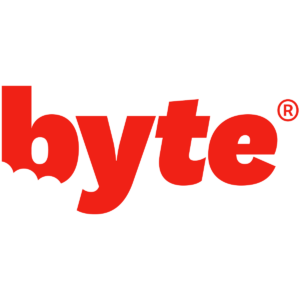Orthodontic treatments are expensive, that’s a common fact anywhere you go around the world. But as with other aspects of health, you cannot take oral health for granted, and this means getting proper orthodontic care. Fortunately, as with other aspects of health, dental insurance can provide dental coverage to help pay off expensive orthodontic care and various dental services. Medicaid for example, covers orthodontic services like metal braces, especially in children where the orthodontic braces is deemed medically necessary.
But for those who don’t want braces, can they get financial assistance for other orthodontic alternatives? More importantly, does Medicaid cover Invisalign? Here is everything you need to know.
So does Medicaid cover Invisalign treatment?
Unfortunately, no, Medicaid doesn’t provide coverage for Invisalign treatment. But as said earlier, there are some differences in guidelines and eligibility requirements in each state, so it is possible that one state might make exceptions if the orthodontic treatment is deemed medically necessary. Thus, make sure you check with your state’s Medicaid program to see your options.
A quick note on Medicaid
Medicaid insurance is a health insurance safety net. This government-provided health insurance provides financial assistance for people who cannot afford their own insurance coverage. It is available to individuals and families at low-income levels. Payments from Medicaid are made directly to the health care provider. In some cases, patients require a small copay for affordable health coverage.
Medicaid programs however are administered a little differently in each state. Thus, each state has its own set of rules, guidelines, and requirements for determining the eligibility of an individual and the medical services he/she is insured with.
Many states fund their own Medicaid programs for individuals and families who are deemed ineligible by federal guidelines.
Nearly all 50 states provide coverage for a wide range of dental services as part of the Medicaid insurance program. However, the procedures they specifically cover and how much differs in each state. The coverage is usually offered to children under the age of 21 to prevent health problems. For adults, the coverage is merely to relieve pain, and infections, and restore teeth.
To know the specific services covered in your state, make sure to contact the Medicaid department in your state.
A quick note on Invisalign
Invisalign is a new kind of orthodontic treatment designed to address a wide range of mild to moderate or even sometimes severe malocclusions. Instead of using traditional braces which are made up of metal brackets, wires, and elastics, Invisalign braces are clear, removable, and custom-fit plastics that cover the teeth. It fits snugly and forces teeth to move in their desired directions and positions.
A patient must wear the aligners for at least 22 hours each day for best results. Since they are removable, the braces can be removed when eating, drinking, or brushing teeth.
Each Invisalign brace is worn two weeks before moving to the next set of braces. The small increments on the clear aligners gradually force the teeth to move to their desired positions for straighter teeth.
Depending on where you live, Invisalign treatment can be cheaper, similar, or slightly more expensive than traditional braces. In the U.S., a full treatment plan ranges from $3,500 to $5,000 (as of 2018). Many dental plans cover part of the cost of the Invisalign treatment as orthodontic surgery. However, some consider it cosmetic, which means they consider the treatment elective and do not provide coverage for it.
Why Doesn’t Medicaid cover Invisalign treatment?
As said earlier, Medicaid is a government-funded, public, subsidized insurance program that offers a wide range of healthcare coverage for low or even no premiums. It doesn’t usually cover everything. However, as with many areas of healthcare, Medicaid has guidelines and restrictions on the procedures and treatments they cover.
Traditionally, orthodontists use metal braces to correct a wide range of malocclusions. From teeth overcrowding, underbite, overbite, overjet, etc. Braces are safe and effective, and until today, they are considered the most popular and efficient form of orthodontic treatment of misaligned teeth. However, they come with a lot of disadvantages too; they are very visible which makes people conscious about having them, and can be quite painful and uncomfortable.
Over the years, braces have seen several innovations, from ceramic braces, and lingual, to invisible braces. These are equally as effective and safe to use. However, they have an aesthetic advantage since they can be discreet. That advantage, of course, comes with a heftier price tag. This is what Invisalign clear aligners try to address – to provide an effective orthodontic treatment that is virtually invisible, comfortable, and for a reasonable price. This makes Invisalign and other similar aligner brands the go-to teeth-straightening solution for adults or anyone conscious of wearing metal braces.
Unfortunately, most of the orthodontic industry considers the treatment as a cosmetic solution. Thus, Medicaid doesn’t consider it for coverage. Moreover, Invisalign is not as widely studied as braces, and they consider the latter like a generic drug – tested and proven and safe.
Does Medicaid cover braces treatment?
Yes, but again, this depends on the age, state, where you specifically live, and the reason why you need your teeth straightened.
While Medicaid provides essential health coverage, it is not comprehensive. In most states, it doesn’t provide comprehensive dental care coverage. The work of an orthodontist often falls into the gray area of their guidelines and restrictions.
Unless the alignment and repositioning of the teeth were caused by a covered accident or illness, adults looking to use their Medicaid to pay for their orthodontic treatment will often strike out. Children of low-income families, on the other hand, can take advantage of orthodontic coverage of Medicaid more frequently, since laxer standards often apply.
Moreover, each state has established rules and guidelines on which benefits to offer and what makes a patient eligible for reimbursement. Thus, you still need a local resource to answer your queries on this matter.
Invisalign treatment payment plans without insurance
Fortunately, there are still ways to make Invisalign treatment affordable, even without dental coverage from Medicaid or dental insurance. Most dental clinics and orthodontists offer flexible payment plans for their services to help break up the cost into smaller and more affordable monthly payments. This applies to both braces and Invisalign treatments too.
You can also pay for Invisalign treatment with tax-free dollars using a flexible savings account (FSA) or health savings account (HSA).
Final Tip
Before you choose an orthodontist, make sure you ask around for these kinds of payment methods. Monthly installments can be a little more expensive than paying upfront since they usually come with interest. However, it gives you the best opportunity to get the best teeth and smile you deserve without stretching your finances too thin!



